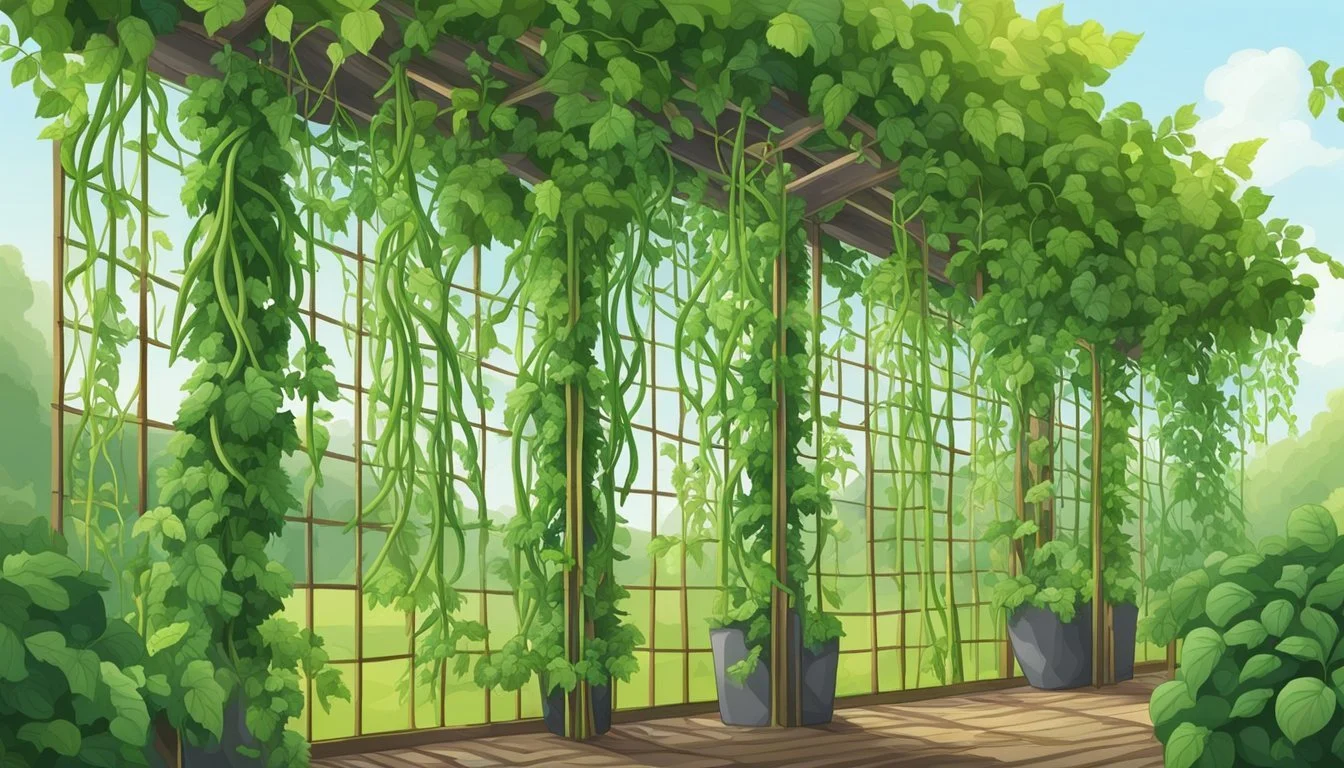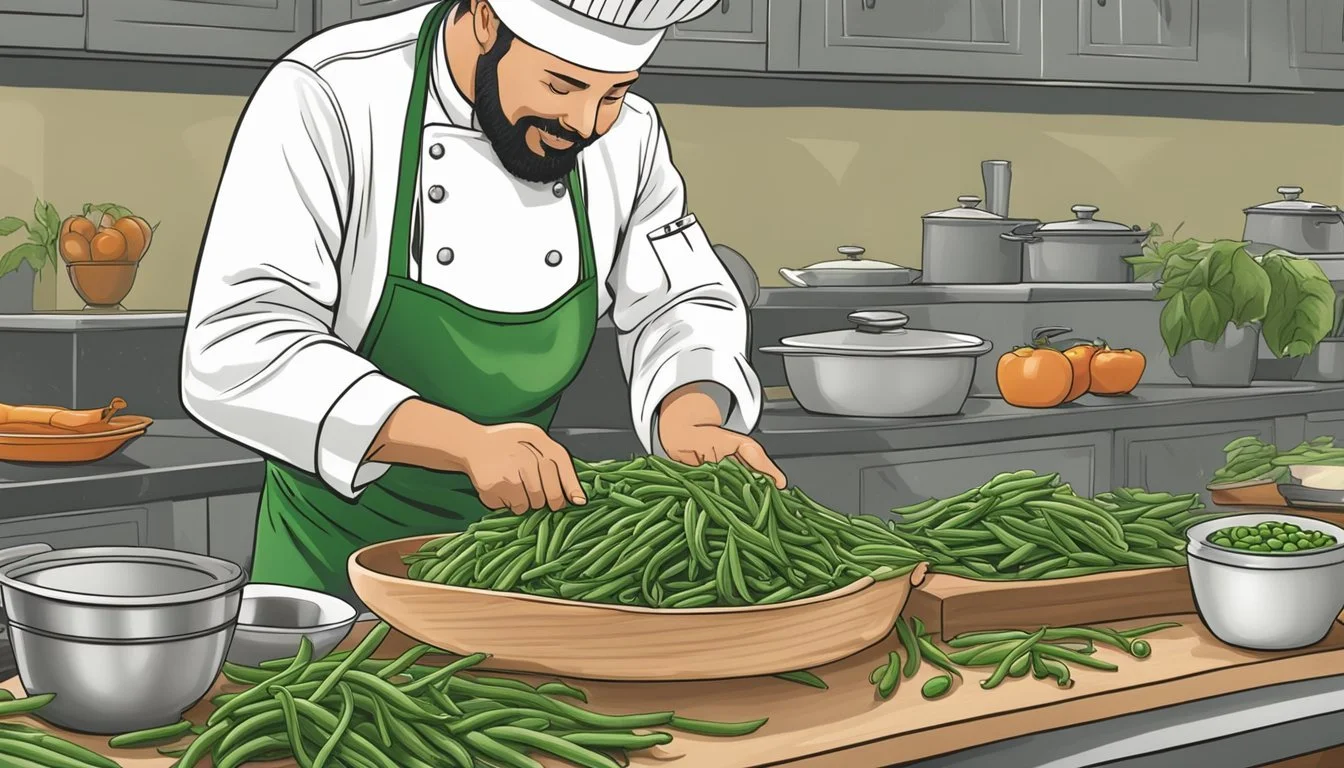Yard-long Beans Substitutes
Best Alternatives for Your Recipes
Yard-long beans, also known as Chinese long beans or Vigna unguiculata, are distinguished by their impressive length and unique texture, often used in various Asian cuisines. For those who cannot find yard-long beans, several substitutes can be just as effective in recipes. Common alternatives include green beans, snap beans, and asparagus, which offer similar flavors and textures suitable for most culinary applications.
When considering a substitute, the cooking method plays a significant role. Green beans and snap beans can readily replace yard-long beans in stir-fries, providing a comparable crunch and light flavor. Asparagus, with its slightly robust taste, makes a good stand-in for yard-long beans in braised dishes or stews.
Understanding the characteristics of each alternative can enhance the culinary experience. Green beans are brighter and firmer, while asparagus may bring a slightly more intense bean flavor. These substitutes ensure that dishes remain delicious and authentic, even without the presence of yard-long beans.
Understanding Yard-Long Beans
Yard-long beans are notable for their impressive length, nutrient density, and versatility in various culinary contexts. This section details their characteristics, growing conditions, and culinary uses.
Characteristics and Nutritional Profile
Yard-long beans, also known as Chinese long beans or long-podded cowpea, belong to the Vigna unguiculata species. These beans typically grow up to 36 inches under optimal conditions, though they are usually harvested when about 18 to 24 inches long.
Texture and flavor of yard-long beans differ from green beans; they have a firmer texture and a slightly more intense bean flavor. Nutritionally, they are rich in protein, fiber, iron, potassium, vitamin A, and vitamin C, making them a valuable addition to diets aimed at improving overall health and nutrient intake.
Cultivation and Growing Conditions
Yard-long beans thrive in warm climates and are predominantly grown in regions such as Southeast Asia. They require well-drained soil and plenty of sunlight. Ideal temperatures range between 65°F to 75°F, ensuring rapid growth and high yield.
Easy to grow, yard-long beans can produce pods continuously throughout the growing season. Regular watering, coupled with occasional fertilizing, enhances growth. Due to their vining nature, supporting structures like trellises are often employed to facilitate vertical growth and ease of harvest.
Culinary Uses in Different Cuisines
Yard-long beans are versatile in the kitchen and feature prominently in various cuisines. They are often stir-fried until tender-crisp, retaining their vibrant color and crunch. Steaming is another method, requiring just about 3 to 7 minutes to achieve tenderness without losing nutritional value.
In braised dishes, yard-long beans complement meats and other vegetables, particularly in garlicky or oniony broths. Southeast Asian cuisines, especially Thai and Vietnamese, incorporate these beans in numerous recipes, enhancing both color and nutrient profile of dishes.
Yard-long beans' unique texture and flavor also allow them to be used in salads, soups, and stews, offering a distinctive taste that's compared to asparagus by some.
Choosing Substitutes for Yard-Long Beans
When selecting substitutes for yard-long beans, it's important to consider factors such as texture, flavor, and appropriate cooking methods.
Criteria for Selecting Alternatives
Texture: Yard-long beans are known for their crisp texture that holds up well in stir-fries, braises, and steaming. When looking for substitutes, prioritize crunchy and firm options that can withstand similar cooking methods.
Flavor: Yard-long beans have a distinctly beany flavor, which is more pronounced than common green beans. Opt for substitutes that offer a similar flavor profile—slightly sweet yet earthy and nutty.
Color: Although not critical, color can affect the visual appeal of a dish. Yard-long beans are typically a darker green. Consider alternatives that have a similar vibrant green color to maintain the dish’s aesthetic.
Popular Substitutes and Their Qualities
Green Beans: Also known as snap beans or bush beans, green beans are shorter and have a sweeter, milder taste compared to yard-long beans. They can be used interchangeably in most recipes, especially stir-fries and steamed dishes.
Chinese Long Beans: A close relative, also known as asparagus beans or snake beans, these make an excellent substitute due to their similar texture and flavor. They are equally versatile and can be used in stir-fries, braises, and steamed preparations.
Pole Beans: These legumes, similar to yard-long beans in texture, offer a comparable crispness and can be involved in various cooking methods. They also have a robust flavor that complements many recipes.
Snap Peas: For a slight textural variation, snap peas can work well. They bring a sweet crunch and vibrant green color. Utilize them in quick-cook dishes like stir-fries.
Snow Peas: Another substitute for shorter cooking methods. Snow peas have a delicate flavor and a crisp texture, making them suitable for steaming and stir-frying.
Asparagus: While not a legume, asparagus shares a similar crisp texture when cooked and can substitute in many dishes, especially those requiring a quick sauté or steaming.
By focusing on the criteria mentioned, you can select the best substitute to maintain the integrity of your dish while enjoying the unique flavors and textures that yard-long beans provide.
Preparation Techniques for Substitutes
Exploring alternatives to yard-long beans involves understanding specific cooking methods and maintaining desired texture and flavor. Different substitutes require distinct approaches to preserve their unique characteristics during preparation.
Adjusting Cooking Times and Methods
When substituting yard-long beans, adjustments to cooking times and methods are crucial. For example, tofu and tempeh benefit from techniques like marinating and baking to enhance their flavors. Tofu is often stir-fried for a crisp, firm texture, while tempeh can be boiled or roasted for a meaty, chewy consistency.
Mung beans and black-eyed peas require longer boiling and simmering times compared to yard-long beans. This helps achieve a tender, yet slightly firm texture. For a sweeter, softer bite, consider steaming substitutes like butter beans or navy beans until just tender. Adapt cooking methods based on the substitute to ensure the ideal texture and flavor profile.
Maintaining Texture and Flavor
Maintaining the desired texture and flavor of substitutes can elevate any dish. Tempeh offers a meaty and chewy texture, lending well to a variety of cooking methods, including braising in a garlicky or oniony broth for rich flavor infusion. Tofu, when properly stir-fried or baked, achieves a firm texture ideal for many recipes.
For a crisp and slightly sweet alternative, stir-frying green beans or roasting them enhances their natural flavors. A firm yet tender result can be achieved by steaming beans such as haricot or cannellini. Utilizing precise cooking techniques ensures that substitutes mimic the desirable attributes of yard-long beans while contributing their unique flavors.
Storing and Preserving Substitutes
Proper storage and preservation of yard-long bean substitutes help maintain their freshness and extend their shelf life. Consider ideal conditions for immediate use and methods for longer-term storage.
Ideal Storage Conditions for Freshness
To keep fresh substitutes like green beans or string beans optimal, store them in the refrigerator. Place them in a plastic bag with a few small holes to allow air circulation. Ensure the refrigerator temperature stays between 32°F and 40°F.
Avoid storing these substitutes near fruits that emit ethylene gas like apples or bananas, as this can cause them to spoil more quickly. Use within 7-10 days for the best quality.
Long-Term Preservation Methods
For long-term preservation, consider freezing or drying. First, blanch substitutes like green beans by boiling them for 3 minutes and then transferring to an ice bath. Once cooled, pat them dry and store them in an airtight container or freezer-safe bag.
To dry beans, spread them out in a single layer on a tray and place them in a low-heat oven (140°F) until fully dried. Store dried beans in a cool, dark, and dry place, preferably in airtight containers or Mylar bags with oxygen absorbers.
Seeds from substitutes can also be dried and stored for future planting. Keep seeds in a cool, dry environment to ensure they germinate when needed, avoiding areas prone to frost.
Health Considerations and Dietary Benefits
Yard-long beans are a nutritious option in many diets. They are low in calories, with approximately 47 calories per 100 grams, making them a suitable choice for those monitoring their calorie intake.
These beans are rich in fiber, providing digestive benefits by promoting regular bowel movements. They can help maintain a healthy digestive system and may reduce the risk of certain digestive disorders.
Yard-long beans also offer a good source of protein, which is essential for body repair and muscle growth. For those on plant-based diets, these beans can serve as an important protein source.
In terms of vitamins, yard-long beans are high in Vitamin C, which is important for the immune system and skin health. They contribute to collagen production and have antioxidant properties.
Iron is another key nutrient found in yard-long beans. Iron is crucial for the production of hemoglobin and preventing anemia.
Here’s a quick summary of their nutrients per 100 grams:
Nutrient Amount Calories 47 kcal Protein - Total Carbohydrates 9.2 g Fiber - Vitamin A 865 IU Vitamin C - Iron - Calcium 50 mg Magnesium 44 mg
Yard-long beans can fight inflammation due to their antioxidant content. They also support heart health by reducing the risk of chronic diseases. Versatile and nutritious, they can be a valuable addition to various diets.
Incorporating Substitutes into Recipes
Yard-long beans can be substituted in various culinary applications with other beans like green beans, snap peas, or even asparagus. Choosing the right substitute depends on the dish and desired texture.
Salads and Side Dishes
When adding beans to salads, snap peas or green beans are excellent choices. Their crisp texture brings freshness to salads that traditional yard-long beans offer. Trim and blanch the beans before tossing them into a mixed salad with ingredients like onion, garlic, and ginger.
Asparagus is a versatile substitute in seasoned side dishes. Roast or sauté asparagus with garlic and olive oil for a flavorful side. For a twist, add blanched green beans to a potato salad, enhancing both texture and flavor.
Main Courses and Specialty Dishes
In stir-fried dishes, green beans or snap peas perform well. Their sturdy texture holds up under high heat. Use them with typical Asian stir-fry ingredients like pork, ginger, and garlic. A quick toss with soy sauce completes the dish.
For stews and soups, substituting with green beans or diced asparagus ensures the vegetables maintain their form during cooking. In curries, green beans can replace yard-long beans seamlessly, absorbing the rich flavors of spices and coconut milk.
These substitutes keep recipes authentic while introducing slight variations in flavor and texture. Explore, experiment, and enjoy the new dimension they bring to classic dishes.






